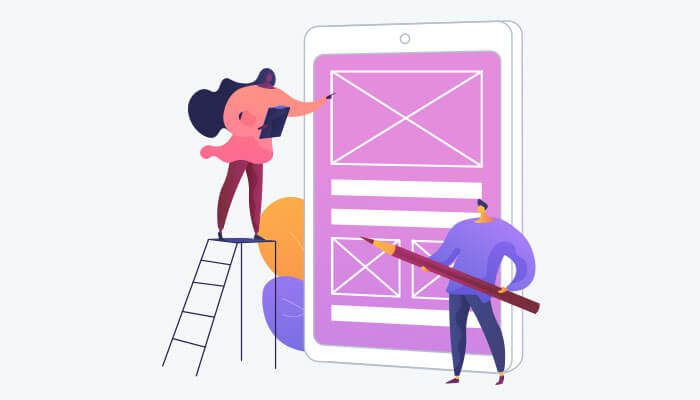User Experience is a vast term, to be successful in this field an individual must attain various other skills. It is a UX design that defines the journey of users while using the product. If the experience is excellent, users tend to use the product again.
While it is impossible to cover every point, we have mentioned a few rules a UX designer must follow to create an outstanding experience for the users.
User Interface(UI) Is Not User Experience(UX)

User Interface includes all the elements like buttons, controls, and elements present on the App. Whereas, User Experience is an outcome of all the interactions made by the user.
UI comes under UX and plays a pivotal role in providing outstanding User Experience. Still, a designer must not consider them to be same in any way. User Experience needs to be clear, comfortable, and user friendly for users to convert into loyal customers.
Know Your Audience
User Research is an important aspect before designing a product. Understanding who your users are and what are their expectations would be rewarding while designing the product. When you know your users, you can focus on providing benefits to them instead of adding extra features.
Keeping users on the top of your mind before start designing certainly helps you to make your product a big success.
Prototyping Is Important
Users of your product can come from different regions, backgrounds, and mindsets. Therefore, You can’t make a mistake of expecting them to have same thoughts and views as you. Alpha and beta testing are highly recommended before launching the product.
Running those tests will help you get feedback from actual users and allows you to make considerable changes if needed. This process might be time-consuming but tends to help your business in long run.
Real Content Is Important
Content comprises a significant amount of any product in the form of images, videos, and text. Designers ignore this important aspect and instead use their alternatives. Using placeholders and lorem ipsum might look good on Artboard but can be a lot different while using actual content.
Using real and notable contact from the starting can be time-saving for designers. Moreover, it would be as close as to the actual final product.
Be Simple And Consistent
The success of digital products depends on their easiness to understand and interact with users. As a designer, it’s your job to make things easy for users to interact with the app. By that I mean, users shouldn’t have to use instructions or a map to navigate through the app.
Consistency is another key aspect that designers should incorporate in their work. A different color scheme on different pages of a website may look attractive but can frustrate and confuse users. Thus, it becomes important for a designer to use a relevant design pattern across every page of the product.
Don’t Try To Solve Everything At Once
Designing is an iterative process that needs regular modifications. Designing a UX has several phases like ideation, prototyping, and testing. So, never expect to make a perfect design in the first attempt. Rather, test your idea with live users, take feedback, and makes changes according to them.
Avoid Using Multiple Typefaces
Generally, in design practice, using two different typefaces are enough. It is not a hard and fast rule, but it’s advisable not to use more unless it’s urgent. An alternate way is to use font-family, it allows you to use different variations a font.
while Selecting a font if you choose a family that has various weights and styles. It allows you to explore different styles without using multiple typefaces.
Conclusion
Designing is all about making mistakes and learning new things every time. If you are afraid to make mistakes and learn, you won’t grow as you will miss out on the learning part. The trick to being a successful designer is to try new things and keep increasing your skills.
Are you looking for guidance/ help with User Experience for your existing/ upcoming Digital Product? Contact us








